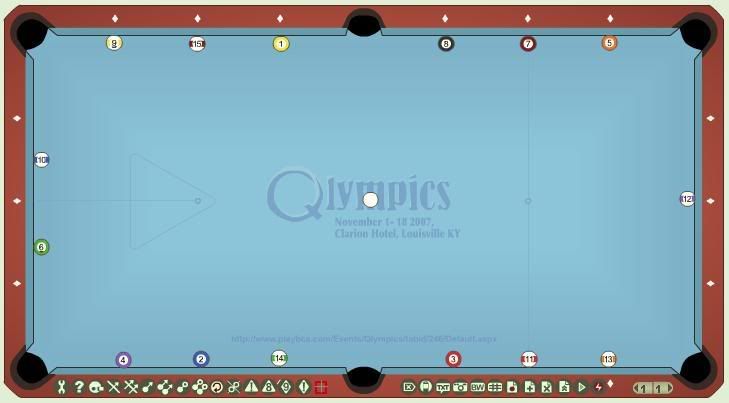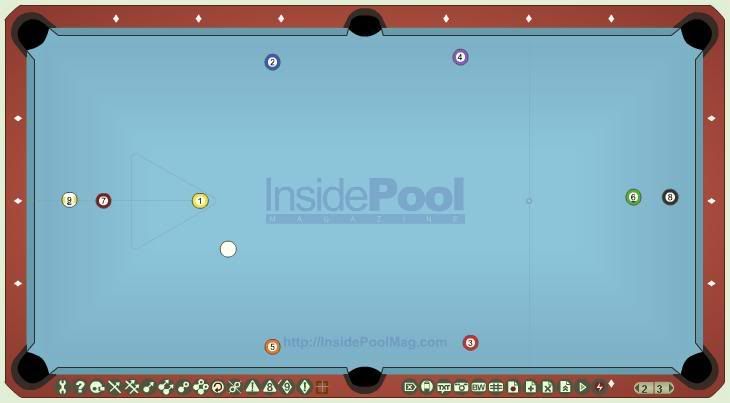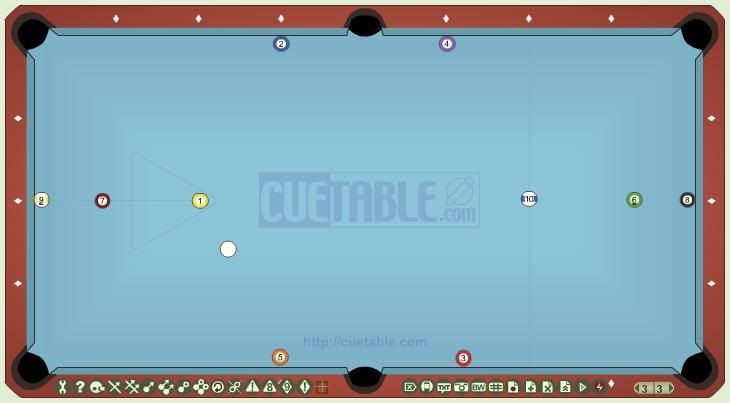S
Scottster
Guest
I believe this is known as "The Ladder" getting to the 3 to the 4 is tough! Position in this drill is imperative
Secaucus Fats said:Variations of that game exist throughout Latin America. In Cuba it is known as "Chicago", in Peru it is called "Minga" and, in Chile it is known as "jardinera".
It is a rotation game.
[...]
I was told that the game originated in Chicago IL...
Fats
Secaucus Fats said:Variations of that game exist throughout Latin America. In Cuba it is known as "Chicago", in Peru it is called "Minga" and, in Chile it is known as "jardinera".
It is a rotation game. As far as money..each ball is worth a pre-agreed amount of money from every other player.
Fats
I used to run through this setup every once in a while to tighten up position and get comfortable cutting balls down the rail. You can shoot the balls in any order.

I picked up on the "Mississippi 9B Drill" from this thread-->
http://forums.azbilliards.com/showthread.php?t=64039
I've tried it and its much harder than it looks. Once I feel comfortable with that, I will step it up to these...
Tougher...

Toughest...

i was in Mexico in the 80's and went into a pool room, i was perhaps the only white boy ever there, it was great. Anyways they racked the balls like in the diagram in the begginning of this post, that was the game-I watched it for a couple hours and I couldnt ever figure it out, what the objective was they were gambling. No one there spoke ANY english and with my broken spanish I couldnt communicate enough with the other rail birds to learn what the hell they were doing. Great guys and we all had fun. i believe the cloth on the table was on the table for perhaps 30 years, man the equipment was in rough shape. It was a very old room. Had a great time, I love pool halls in Mexico. I'll tell some of my war stories sometime about them. Viva Mexico!!!!